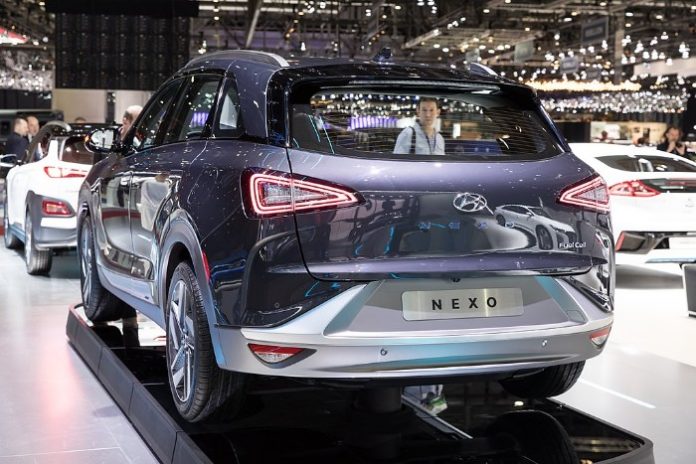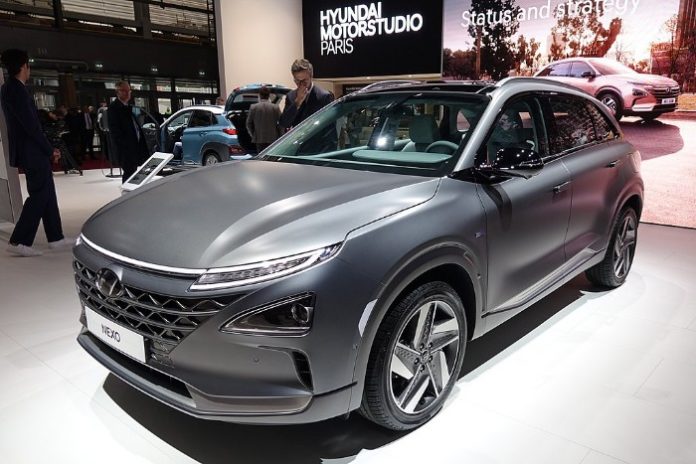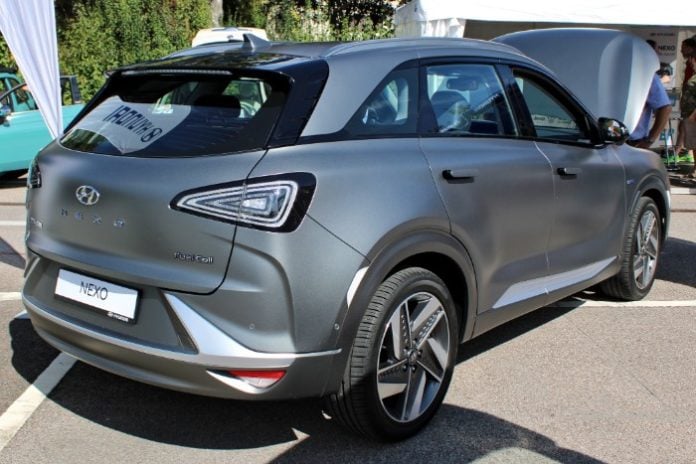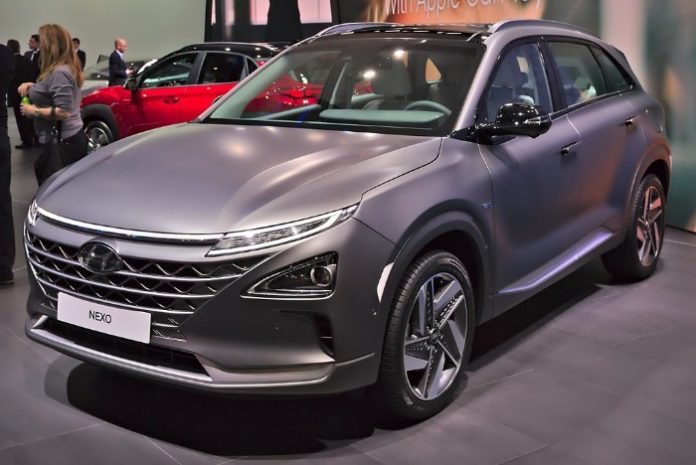The Hyundai Nexo FCEV (fuel cell electric vehicle) is a replacement for the Tucson FCEV.
The first unit in the US was purchased by a California resident and supporter of green transportation. Todd Hochrad is a former scientist and big believer in electric vehicles. With many (and electric) vehicles under his belt over the years, now he has a chance to enjoy a hydrogen fuel cell EV, which comes with its own set of benefits.

The Hyundai Nexo comes with a 160 horsepower and 291 lb/ft of torque. While not particularly impressive, all power is immediately available courtesy of the electric motor. So while not fast, the ride is smooth and dependable.
The car is designed as a convenient daily driver, coming with multiple assist systems such as cruise control, lane-keeping and remote parking.
Taking one home will set you back $58,300 outright or $399 – $449 per month for 36 months, depending on the trim and options. Every purchase comes with a 10-year or 100,000 miles warranty, free 1-year maintenance and $13,000 worth of hydrogen.

Under the hood, a hydrogen fuel-cell vehicle is still powered by an electric motor. From a performance and handling standpoint, you can expect it to move like a regular battery-powered electric car. The difference is where the electricity comes from.
In normal EVs, you power the car from a battery which needs to be recharged when depleted.
In hydrogen fuel cells, electricity is generated by splitting hydrogen into electrons and positive hydrogen ions. The electrons power the motor which drives the car. Then, the hydrogen ions, electrons and separately introduced oxygen bond back together to produce water – the only byproduct of driving the car.
The power generation can continue as long as you have hydrogen in the tank, making refueling similar to ordinary gasoline-powered vehicles… The hydrogen tank in a Hyundai Nexo is good for 370 miles and refueling takes around 5 minutes – as long as you have a hydrogen charging station nearby.
Unfortunately, in the US, hydrogen stations are only really available in Southern California and San Francisco, so hydrogen electric vehicles are limited to those regions. But as more and more manufacturers create their own lines of hydrogen fuel cell vehicles, we expect the infrastructure to grow in the coming years.

